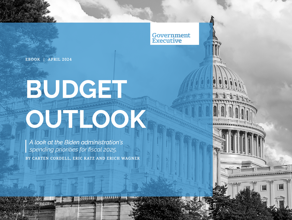VA told to encourage employees to report mistakes
VA told to encourage employees to report mistakes
Creating an environment where employees of Veterans Affairs medical centers feel comfortable reporting errors and accidents is crucial to improving patient safety and overall VA health care, according to testimony submitted to a House subcommittee Thursday.
"Whatever the reason for employees not fully and openly disclosing such events, VHA [Veterans Health Administration] managers need to continue to emphasize this very important issue, and encourage employees to report each incident that occurs," said Richard J. Griffin, inspector general at VA, in testimony submitted to the House Veterans Affairs Subcommittee on Oversight and Investigations.
A hearing before the subcommittee on patient safety and quality management at VA was scheduled for Thursday, but was cancelled by Chairman Terry Everett, R.-Ala., because of a series of House votes. Witnesses submitted their written testimony for the official record.
In December 1999, the Office of the Medical Inspector at VA reported a total of 2,927 medical errors from June 1997 to December 1998-more than 700 of which resulted in accidental patient deaths or suicides. The release of this study followed an Institute of Medicine report that said as many as 98,000 Americans die each year as the result of physician errors.
"A growing body of evidence shows that adverse events are commonly caused by problematic systems and processes rather than human performance problems," said Cynthia A. Bascetta, associate director of Veterans' Affairs and Military Health Care Issues at the General Accounting Office.
Bascetta said VA has made progress in improving patient safety, but still has a long way to go.
VA began its patient safety effort in 1997, and officials estimate it will take five to seven years to implement its various initiatives. So far, the department has spent approximately $478 million on improving veterans' health care.
The agency's National Center for Patient Safety, created in 1998, oversees the reform effort. Training for VHA quality managers and clinicians on the causes of medical errors and accidents began in October 1999.
In May of this year, VA established the Patient Safety Reporting System, a voluntary reporting system that allows employees, patients and visitors to report safety concerns without fear of reprisal. The system is modeled after the Federal Aviation Administration's successful safety reporting system, operated by NASA.
VA has also required the use of bar code technology for patient identification to avoid errors in conducting blood transfusions and administering medication. In a pilot test at the Topeka, Kansas VA medical center, medication errors were reduced by about 70 percent using the bar code technology.
Despite these advances, Bascetta said it was too early to predict the success of the agency's efforts.
GAO urged VA to continue promoting the reporting and review process and encourage employees to come forward when errors occur so the agency can learn from its mistakes.



